Clancy Tucker's Blog, page 174
September 28, 2017
29 September 2017 - AMAZING FACTS ABOUT CAMELS
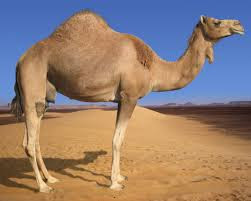
AMAZING FACTS ABOUT CAMELS
G'day folks,
Here are some facts you may not have known about these creatures.
Baby camels are born without humps. They are however able to run within hours of birth, and they call to their mothers with a lamb-like “baa” sound. Mother and child camel pairings are extremely close, staying together for several years.
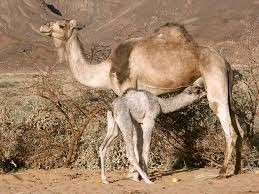
Quick FactsType: MammalDiet: Predominantly herbivorousLife span: Up to 45 yearsSize: 1.5-2.1 m tall, males larger than femalesWeight: 400-600 kg, males heavier than femalesHabitat: Deserts, mountains and other arid regionsRange: Africa and the Middle-East, and AsiaScientific name: Camelus Amazing Facts About the CamelCamels are social animals who roam the deserts in search of food and water with up to 30 other individuals.With the exception of rutting males competing for females, camels are very peaceful animals who rarely exhibit aggression.Contrary to popular misconception, camels do not store water in their humps. The humps are actually reservoirs for fatty tissue. Concentrating fat in their humps minimises insulation throughout the rest of the body, thus allowing camels to survive in such extreme hot regions. Asian camels have two humps whereas Arabian camels only have one.Camels have two rows of thick eyelashes to protect their eyes from the desert dust. They are also able to close their nostrils and lips to keep out the dust.Camels’ ears are small and hairy. However their sense of hearing is also extremely strong.The amount of water a camel drinks on a day-to-day basis can vary greatly, as they drink to replace only the fluid they’ve lost. A thirsty camel can drink up to 135 liters in one sitting!In Arab cultures the camel symbolises patience, tolerance and endurance.Camels have played such an important role in Arabian culture that there are over 160 words for ‘camel’ in the Arabic language.
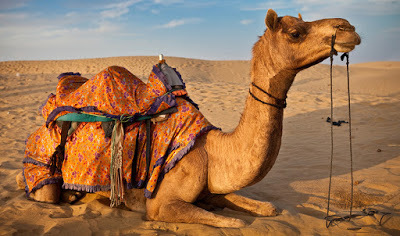
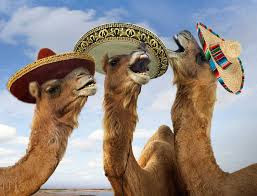
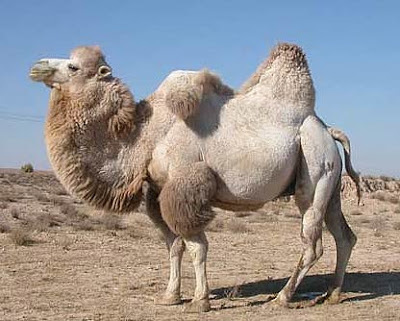

Clancy's comment: These animals are so important to many people around the world. Here in Australia we have thousands of them.
I'm ...
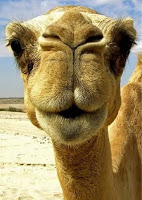

Published on September 28, 2017 14:42
September 27, 2017
28 September 2017 - THE GAS STATION MUSEUM IN MILAN

THE GAS STATION MUSEUM IN MILAN
G'day folks,
T oday I learned that in the world of collectibles, gas pumps actually have their own genre, and it’s called “petroliana“. If you’re a classic car lover or just love vintage stuff, prepare to freak out a little bit over the most complete collection of petroliana anywhere else in the world. Welcome to the Museo Fisogni.
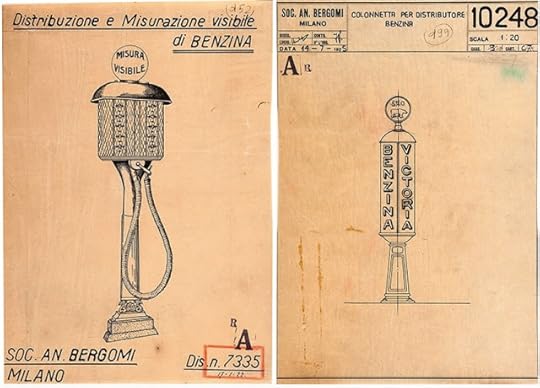
The Museo Fisogni started out as a warehouse near Milan, filled with more than 50 years of Guido Fisogni’s passion for collecting and restoring anything belonging to the history of the petrol station. In the early sixties, Guido chanced upon an an old five-litre, double-vessel Bergomi gasoline pump, abandoned in a sand quarry, in pitiable condition.
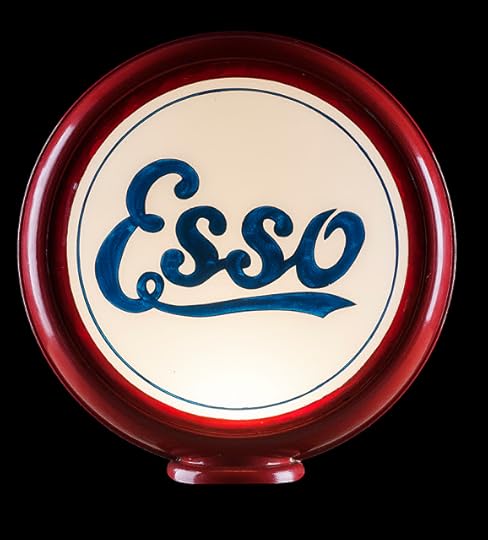
“I decided immediately to recuperate and restore it, and since that moment … work and hobby now intermingled, I have been able to put together a collection which the experts of industrial art judge to be unique and particularly rich.”
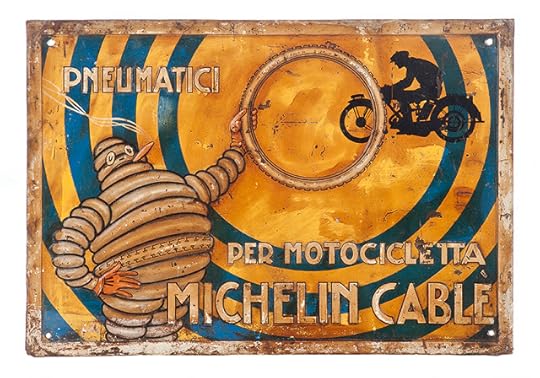
The unique Fisogni Museum of the Petrol Stations, now holds than 5000 pieces of industrial archaeology collected by Guido, including petrol pumps, globes, gas containers, advertising boards for roads and locations, air compressors, fire extinguishers, tools, gadgets, toys, photographs and more.
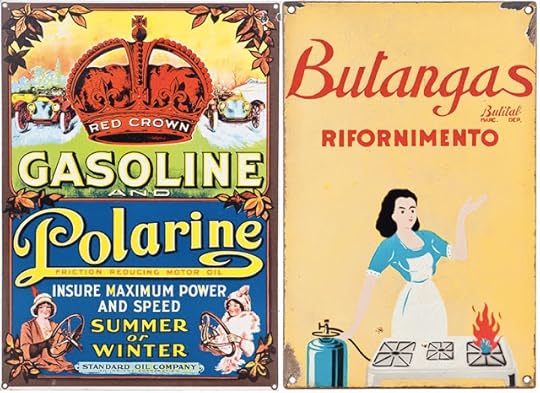
Funnily enough, the only thing the museum doesn’t have is gas for your car.
It’s amazing to think about how to most people, this stuff was just a bunch of greasy junk they’d rather not have to put their hands on. Nowadays, you can’t get your hands on pieces like these for less than a small fortune.


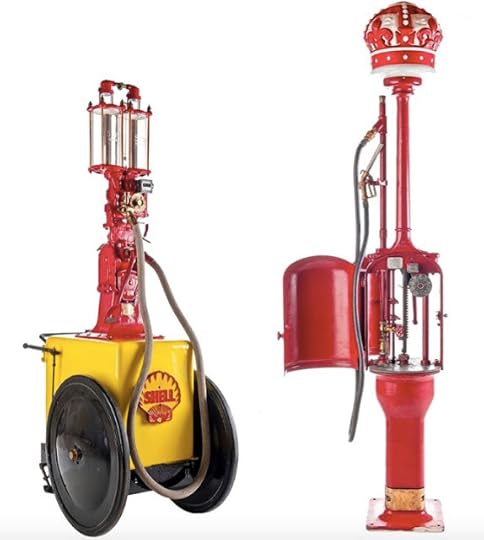
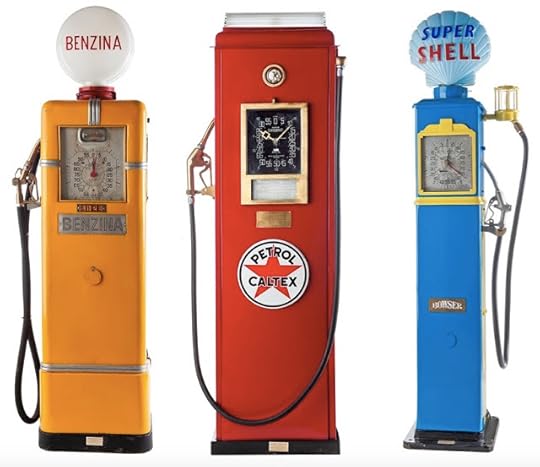

Clancy's comment: What will they collect next?
I'm ...

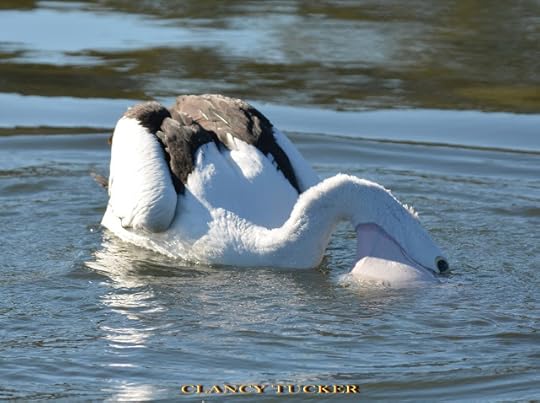
Published on September 27, 2017 15:09
September 26, 2017
27 September 2017 - SOME FACTS ABOUT ALLIGATORS
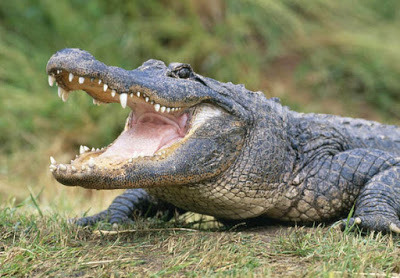
SOME FACTS ABOUT ALLIGATORS
G'day folks,
An alligator is a crocodilian in the genus Alligator of the family Alligatoridae. The two living species are the American alligator and the Chinese alligator. In addition, several extinct species of alligator are known from fossil remains.
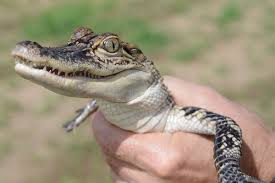
Alligators are amongst the most attentive parents in the reptile world, remaining with their young for as long as three years.
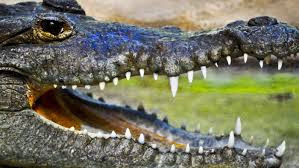
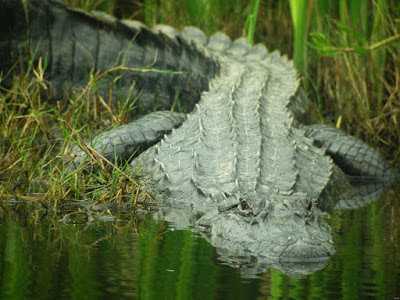
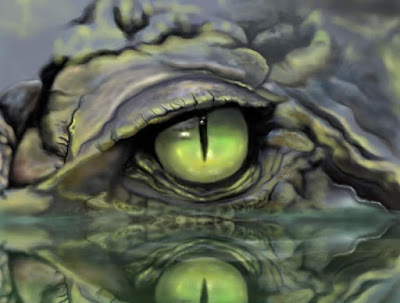

Amazing Facts About the AlligatorThere are two living species of alligator in the world: the American Alligator (Alligator mississippiensis) and the Chinese Alligator (Alligator sinensis).The alligator is often described as “a living fossil” given that it has evolved little over the past 65 million years.Female alligators construct nests made of vegetation and mud. They can lay over 50 eggs in a single season. They are amongst the most attentive parents in the reptile world, tending to remain with their young, caring for them for as long as three years.The sex of a newborn alligator is determined by the temperature of the nest. Incubation temperatures of 30 Celsius or below will produce females, whereas 34 Celsius or above will produce males. Although often confused with crocodiles, alligators can be distinguished from crocodiles by their broad u-shaped snouts; comparing them with crocodiles’ v-shaped snouts.Alligators can have up to 80 teeth at any given time. New teeth grow to replace worn ones and throughout a lifetime an alligator can have between 2,000 and 3,000 teeth.Alligators are opportunistic feeders who ambush their prey rather than chase them. They can reach 30 miles per hour in a short burst, however cannot maintain a high speed.The alligator became the official state reptile of Florida in 1987.In North American shamanism, alligators are symbols of adaptability and survival.Although seriously endangered in the 1950’s the American Alligator’s numbers have grown since they came under legal protection. Being killed for their skins was the major issue.

Clancy's comment: They sure have mean-looking teeth, eh? Mm ... Interesting fact above about incubation and the sex of a newborn.I'm ...


Published on September 26, 2017 14:52
September 25, 2017
26 September 2017 - MOVING PICTURES

MOVING PICTURES
G'day folks,
Welcome to some smart and moving pictures.







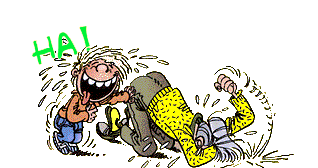



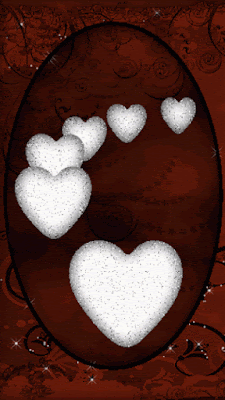

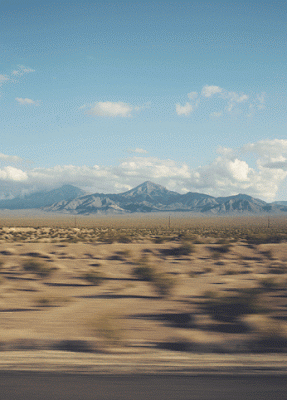
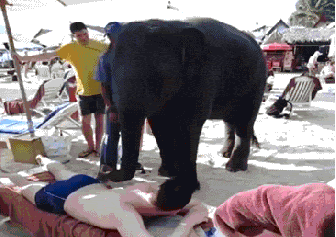




Clancy's comment: I loved the elephant. Such smart creatures. Loved the grapes as well.
I'm ....
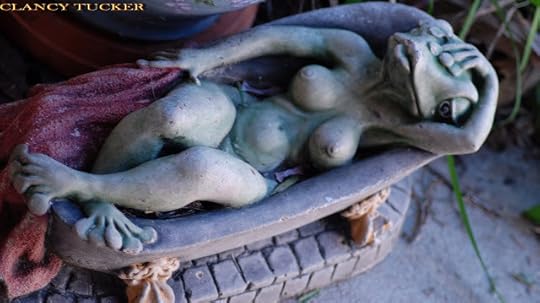
Published on September 25, 2017 14:43
September 24, 2017
25 September 2017 - PORTLAND’S SHANGHAI TUNNELS
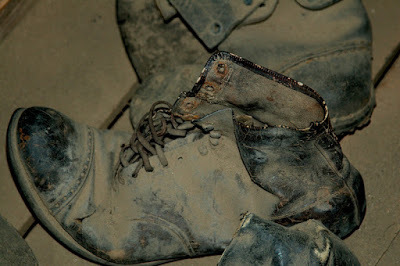
PORTLAND’S SHANGHAI TUNNELS
G'day folks,
Some underground histories are famous, but some have remained just that, underground.
Even if you live on the West Coast, you might not have heard the urban legend of Portland’s infamous Shanghai Tunnels. Portland, a port city in Oregon near the Columbia River, has a gridlock of interconnected basements and passageways under many of its streets. While not everyone agrees what the tunnels were used for, there are certainly a number of interesting theories.Portland’s Underground has come to be known as the Shanghai Tunnels in homage to the final destination of the numerous people human trafficked from the city. Shanghai was a popular destination for trade during this period because of the lucrative opium business perpetuated by the West.
While human trafficking occurs for many reasons, legend has it that when ship captains arrived in Portland, many members of their crew would abandon ship and make way down to California for the gold rush. Sea captains became desperate to replenish their crew and are believed to be one of the most common paying customers for a “shanghaied sailor”– usually delivered drunk or incapacitated by knockout drops via Portland’s Shanghai Tunnels shortly before sailing time. The delivery men, or “crimps” collected a fee known as blood money.

Cascade Geographic Society operates tours of sites that they have excavated under the once dangerous North End neighbourhood under the guidance and determination of one man, Michael Jones, who claims to have become fascinated with the tunnels and their history after first exploring them illegally as a child.
According to the society’s research, thousands of civilians were trafficked through Portland, men and women alike. Shanghaiers would capture drunks out in the street, or women walking alone to sell to other cities as prostitutes. They would keep these poor souls locked up in cells hidden in the pitch black underground. The society has uncovered piles of shoes discarded after they were stolen from victims, who in the unlikely event that they escaped a cell would have to walk barefoot over ground covered in glass and inevitably leave behind a trail of blood to track them with.

While shanghaiers captured their victims in any number of ways, perhaps the most fanatical is that of the hidden drop chute in floors. The Cascade Geographic Society has found a number of them hidden in the floors of North End Bars and even keeps one on display for their tour. Bar owners would be paid off to look the other way when shanghaiers would slip a drug into a patrons drink. When they would start to feel the effects, the bartender would hit a button under the counter and the patron would drop into the basement below and the door would swing shut again before anyone was the wiser.
If you take a walk beneath the streets you can find any manner of dark places of the past. A number of opium dens were built during the 1800s when the drug craze had reached it’s talons into American soil. Spots were sold on bunk beds three high, where the least expensive was the top because the intoxicated had the farthest to fall. There were also cells where trafficked women had their spirits broken by kidnappers before being sold into the trade and even a stage where enslaved people were purportedly auctioned off. The society has partnered with organizations that work to prevent human trafficking around the world and has even set up a museum in commemoration of the lives that were, and continue to be ruined by such an obscene practice.
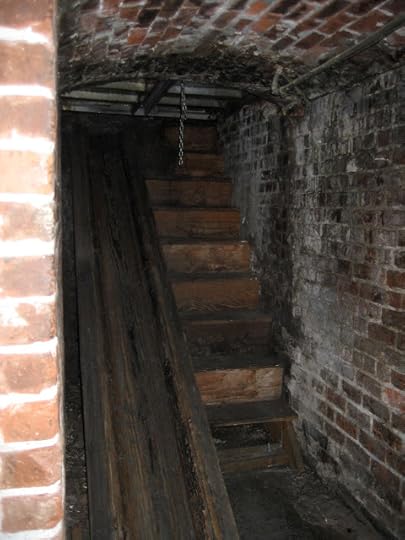
While the Cascade Geographic Society has done research and excavation of the Portland Underground since the 1970s, collecting a number of oral histories from those who witnessed the events and artifacts that they find along their excavations, their account of history is not the one widely accepted. The widely accepted truth is one most commonly cited Barney Blalock’s 2014 book Oregon Shanghaiers.” A history that argues that the underground was built during a time when the North End (overlapped with Chinatown) was full of rival gangs, brothels, and opium dens, and that the tunnels were used mainly to deal with rival gangs and escape police raids. Blalock had gone so far as to say “The only truth to these stories is this: yes, there were some people who were shanghaied in Portland, Oregon. However, the likelihood of any of them being shanghaied via tunnel is nil.”
According to Oregon news source Oregon Live, “Portland State professor emeritus Carl Abbott writes the tunnels had other purposes: “There were connected basements for ease of moving goods between buildings and as escape routes from police raids, as well as drainage tunnels, so my understanding is that several different architectural features get lumped together as the Shanghai Tunnels.”

Many historians blame the Cascade Geographic society’s tours for perpetuating a misleading story to tourists, but the Society maintains that they only began giving tours because of the massive requests for one after they began their excavation. When asked where so much of the miscommunication comes from, Nita Kreuzer from the Society replied “No one else has done the on-the-ground research over the course of decades like Michael has done. As well, several folks who have come to us over the past twenty years have been turned away from historical societies, for reasons we don’t understand.

There are also ‘historians’ who give no credit to oral history; maybe we wouldn’t, either, if those who have shared their stories didn’t have such similar experiences, years apart and not knowing of each other. One of our volunteers (he’s in his 70s) is a descendant of the England-trained brick and stone masons who oversaw the work underground and actually had a family member become a shanghaier; he has donated all photos and written documentation to us.”
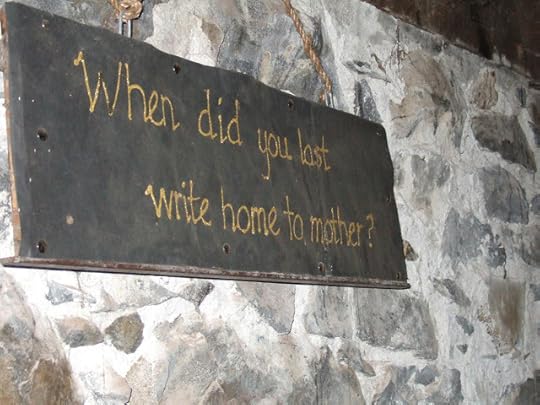
So, believe what you will, whether that be that people were human trafficked beneath the streets or through them. Either way, Portland was a city you didn’t want to be caught walking alone in no matter your gender.

Clancy's comment: Mm ... What do you think?
I'm ...


Published on September 24, 2017 15:00
September 23, 2017
24 September 2017 - AMAZING FACTS ABOUT THE PEREGRINE FALCON
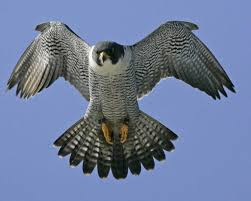
AMAZING FACTS ABOUT THE PEREGRINE FALCON
G'day folks,
I recently saw a David Attenborough documentary about this amazing bird. Here are some very interesting facts about this creature.

The peregrine falcon is perhaps the best hunter of the falcon family. It hunts in wild uplands and rocky coasts, scanning the landscape for prey with its exceptional eyesight.Their eyes are larger and heavier than human eyes and they can spot prey on the ground from a great height of 300m.Soaring through the sky on broad, pointed wings, the streamlined peregrine falcon is a most impressive sight as it hunts down small birds. The force and impact of its breathtaking ‘stoop’ – a sheer, high-speed dive – is often enough to kill a victim outright while still in mid-air.The peregrine’s courtship involves the male passing food to the female, often when in flight. To make this manoeuvre possible, the female will roll over when flying to take the offered food from his talons.Peregrine falcon chicks mature quickly. They have tremendous appetites and double their weight in just around 6 days. At three weeks of age they are already around 10 times their size at birth. The male peregrine is called a ‘tiercel’ because it is a tierce (one third) smaller in size than the female.Peregrines will often return to the same eyrie (nest) each year.The peregrine falcon is the fastest animal on the planet. In a ‘stoop’ they can reach up to speeds of 290km/h.During the Second World War peregrines were deliberately shot down in case they caught carrier pigeons which were delivering messages.Today, the main predator to the peregrine is chemical pollutants, which they ingest from their prey and are highly sensitive too. The introduction of pesticides such as DDT saw numbers in Britain decline considerably. These poisons do not break down in the environment. Instead they accumulate in the food chain and birds such as falcons inevitably take in large quantities of such toxic substances. This greatly diminished their breeding success. However, restrictions on the use of agricultural chemicals and legislation to protect the species mean that numbers have now begun to recover.
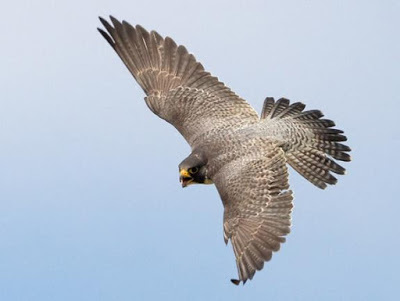

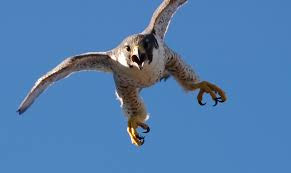

Clancy's comment: Wow, they can travel up to 290 km's per hour. That is fast.
I'm ...


Published on September 23, 2017 15:20
September 22, 2017
23 September 2017 - THE GODFATHER BAR IN SICILY
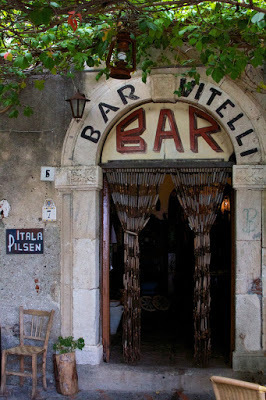
THE GODFATHER BAR IN SICILY
G'day folks,
A famous bar in The Godfather movie is still operating in Sicily.

O nce upon a time, Michael Corleone sat on the shady terrace of a local Sicilian bar after a day of hunting with his bodyguards in the mountains. He began to enquire with the bar owner about a beautiful girl he had seen by the roadside. The man quickly realised that Michael was describing his own daughter and stormed off back into the bar, unaware of exactly who he had just snubbed….
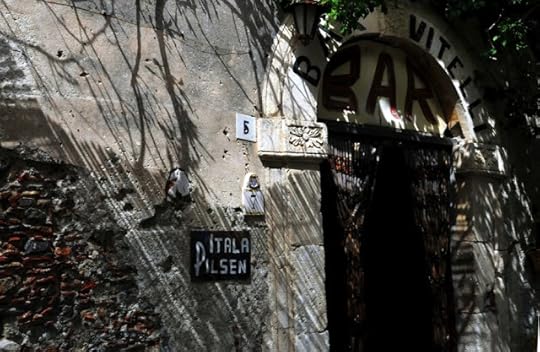
Mr. Corleone’s bodyguards returned with the newly enlightened bar tender and he begrudgingly agreed to a meeting where he would no doubt be swayed to give his daughter’s hand in marriage to the Godfather– an offer he can’t refuse!

Savoca, a quiet town in the Province of Messina in the Italian region Sicily, located east of Palermo, was the location for the scenes set in Corleone of Francis Ford Coppola‘s The Godfather. Bar Vitelli in Savoca, which is still a functioning establishment, was featured in the motion picture as the place where Michael Corleone asked the father of his doomed bride to be, Apollinia, to help arrange the match.

Nothing has changed at Bar Vitelli since the movie’s release in 1972 …
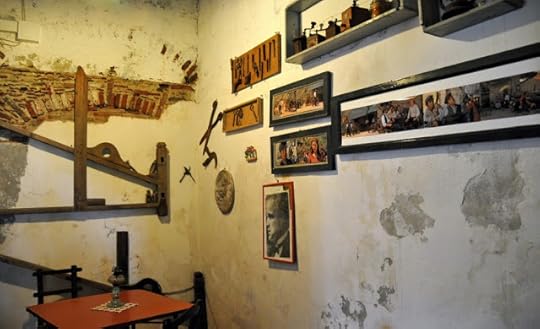

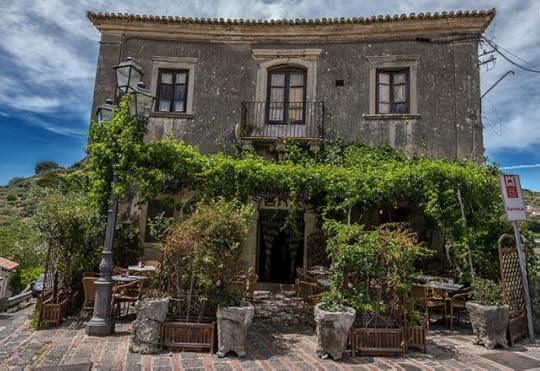
If you’re ever in Sicily, you can find it at Piazza Fossia 7, Savoca.

Clancy's comment: My greatest memories of Italy are the smaller towns and their restaurants. Given the opportunity, I'd move there tomorrow, find a nice shack and write forever.I'm ...
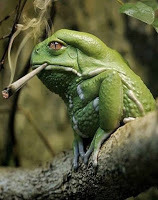

Published on September 22, 2017 13:56
September 21, 2017
22 September 2017 - GREAT QUOTES WORTH READING

GREAT QUOTES WORTH READING
G'day folks,
Time for some interesting and inspiring quotes.


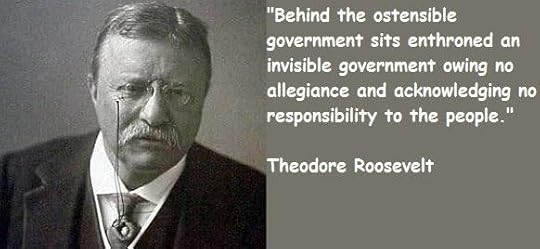













Clancy's comment: Some goodies here today.
I'm ...


Published on September 21, 2017 13:34
September 20, 2017
21 September 2017 - COMMON VAMPIRE BATS
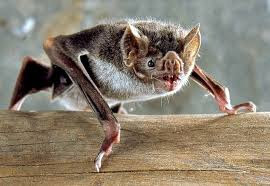
COMMON VAMPIRE BATS
G'day folks, Bats are the only mammals that can fly, but vampire bats have an even more interesting distinction — they are the only known mammals that survive solely on blood.
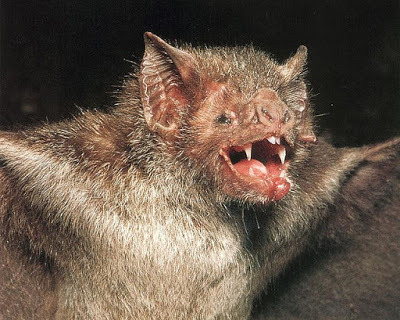
Quick FactsType: MammalDiet: CarnivoreLifespan: Around 9 yearsSize: Body 9cm, wingspan 18cmHabitat: Arid to humid, tropical and subtropical areasRange: Central to South America Amazing Facts About the Common Vampire BatVampire bats tend to live in colonies in almost completely dark places, such as caves, old wells, hollow trees, and buildings.These creatures are nocturnal and most active in the early night.Vampire bats roost alone, in small groups, or in colonies of thousands.The basic social structure of roosting bats is made of ‘harems’. These are composed of females and their offspring and a few adult males known as ‘resident males’ and a separate group of males, known as ‘nonresident males’.Female vampire bats form associations with one another that can last for many years.Vampire bats are believed to be the only species of bats in the world to ‘adopt’ another young bat if something happens to the bat’s mother. They are very clean animals that frequently groom themselves as well as other bats. Vampire bats generally fly about one metre off the ground. Like the legendary monster from which they get their name, these small mammals drink the blood of other animals for survival. They feed on blood from sleeping cows, pigs, horses, and birds. Though uncommon, vampire bats occasionally bite humans for blood. Vampire bats have such good eyesight that they may be able to see a cow from a distance of 130 metres.

They don’t remove enough blood to harm the animal, but their bites can cause nasty infections and disease.Unlike some other species of bats, vampire bats can walk, run, and jump. They have very strong hind legs and a special thumb that helps them take off after feeding.Each night, vampire bats drink about half of their body weight in blood.If they can’t find blood for two nights in a row, they will die. Luckily, female bats can be generous; well-fed bats will often regurgitate blood to share with others in exchange for grooming.Vampire bats can actually be quite tame, and even friendly to humans.Owls, eagles and hawks are some of the vampire bat’s main predators.Rather than sucking blood, vampire bats make a small cut with their teeth and then lap up the flowing blood with their tongues.These bats are so light and agile that they are sometimes able to drink blood from an animal for more than 30 minutes without waking it up.
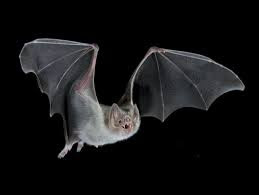


Clancy's comment: Some of these facts are very interesting, especially the last item.I'm ....


Published on September 20, 2017 13:30
September 19, 2017
20 September 2017 - RUSSELL CROWE

RUSSELL CROWE
G'day folks,
Russell Ira Crowe is an actor, film producer and musician. Although a New Zealand citizen, he has lived most of his life in Australia.
Actor Russell Crowe won an Oscar for his performance in the 2000 blockbuster Gladiator and a nomination for his 2001 role in A Beautiful Mind.
“I am always described as 'Hollywood Hard Man.' It's just ridiculous. I know some hard men, mate, and I am not a hard man. I'm a guy who likes poetry, who writes songs. I put on make-up for a living. Give me a break.”
—Russell Crowe
Synopsis
Actor Russell Crowe was born on April 7, 1964 in Wellington, New Zealand. He made a name for himself acting in Australian cinema and eventually became an international star with projects like The Insider, Gladiator (for which he won an Oscar), A Beautiful Mind and State of Play. After a singing role in Les Misérables, he’s played Superman sire Jor-El in The Man of Steel.

Origins
Russell Crowe was born on April 7, 1964, in Wellington, New Zealand. His family moved to Sydney, Australia when Crowe was four years old. He spent a good deal of time on the sets of various film and television productions, where his parents worked as caterers; at age six, Crowe was cast as an orphan in the TV series Spyforce, the first of his many small parts as a child actor.
His family returned to New Zealand in 1978, and Crowe began performing as a rock singer, billing himself as Rus le Roc and recording the prophetically titled 1980 single “I Want to Be Like Marlon Brando.” During this period, he and a friend formed Roman Antix, which later evolved into 30 Odd Foot of Grunts, a rock band for which Crowe sings, plays guitar and writes lyrics.
Early Career
He returned to Australia in the early 1980s to pursue his acting career, winning a role in a production of the musical Grease in 1983. From 1986 to 1988, Crowe starred in a touring production of The Rocky Horror Picture Show. A role in the stage musical Blood Brothers in 1989 led to his first feature film, Blood Oath (1990, released in the U.S. as Prisoners of the Sun). His other early films included The Crossing (1990), which marked his first leading role, and The Efficiency Expert (1991, released in the U.S. as Spotswood), with Anthony Hopkins and Toni Collette.
His breakthrough roles showcased two very different sides of Crowe—in 1992’s Proof, he played a gentle, gullible dishwasher, earning an Australian Film Institute Award for Best Supporting Actor; he won the Best Actor statue the next year, for his turn as a brutal Nazi skinhead in the controversial film Romper Stomper. His next and equally iconoclastic role was as a gay plumber living with his widowed father in The Sum of Us (1994).
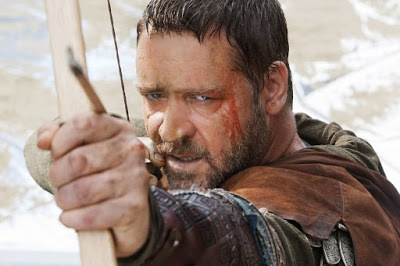
International FameIn 1995, Crowe made his American film debut, appearing with Sharon Stone, Gene Hackman and Leonardo DiCaprio in the offbeat Western The Quick and the Dead, which met with a mediocre critical and popular reception. That same year, he played SID 6.7, a virtual reality outlaw created as a composite of more than 150 serial killers (SID stands for Sadistic, Intelligent and Dangerous) who is hunted by Denzel Washington in the poorly rated sci-fi thriller Virtuosity. He also played the romantic leads in the little-seen films Rough Magic(1995), opposite Bridget Fonda, and Breaking Up (1997), opposite Salma Hayek.
Though many insiders pegged him as “one to watch,” no one in America really paid attention to Crowe until L.A. Confidential, the highly acclaimed 1997 neo-noir film that probed the dark underside of Los Angeles in the 1950s. Crowe played the brutal, forthright cop Bud White, one of a trio of very different policemen—the film also starred Kevin Spacey and fellow Australian Guy Pearce—who stumble upon a twisted and murderous conspiracy. Crowe’s simmering performance (including steamy love scenes with co-star Kim Basinger) earned him rave reviews and a certain measure of recognition among American moviegoers.
Hollywood A-List
Crowe’s first starring role of 1999 came in Mystery, Alaska, a poorly received comedy written by David E. Kelley and co-starring Burt Reynolds. He had a good deal more success with his next film, The Insider, based on the true story of an ex-tobacco company executive, Jeffrey Wigand, who is convinced by a TV news producer to blow the whistle on the powerful tobacco industry. Despite mediocre box office, The Insider, which was directed by Michael Mann and also starred Al Pacino, garnered a huge amount of critical praise—including Academy Award nominations for Best Picture and Best Director.
Crowe’s intense, Oscar-nominated performance as the reluctant Wigand was arguably the most remarkable aspect of the film; the actor gained 35 pounds for the role and was nearly unrecognizable in a thinning gray wig.
In 2000, Crowe vaulted to A-list Hollywood stardom with his charismatic performance as a Roman general-turned-vengeful-slave in Gladiator, the ambitious Roman epic and blockbuster summer hit directed by Ridley Scott and costarring Joaquin Phoenix. The film garnered 12 Academy Award nominations, including a second straight Best Actor nod for Crowe. On Oscar night in March 2001, Crowe beat out Hollywood stalwart Tom Hanks, among others, to take home the Oscar. Gladiatorwon in five categories, including the night's biggest honor, Best Picture.
Also in 2000, Crowe starred in the romance/adventure Proof of Life, as a hostage negotiator who becomes romantically entangled with his client, played by Meg Ryan, after her husband is kidnapped. (The film, like The Insider, was based on an article published in Vanity Fair.)
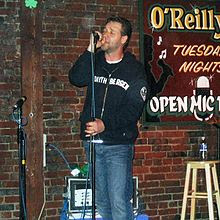
Bad Boy Reputation Widespread rumors about Crowe’s brash personality only increased with his growing fame. In late 1999, he was reportedly involved in a brawl outside a bar in New South Wales, Australia. The owner of the bar, who claimed to have a security videotape that showed the actor had initiated the brawl, was subsequently charged with blackmail after allegedly attempting to extort money from Crowe in exchange for the video. Crowe's “bad boy” reputation and smoldering on-screen intensity have inspired comparisons to the young Brando. Although he is reportedly intense and demanding while working on set, a number of co-stars have publicly praised him for his charming, professional demeanor.
Crowe made even more headlines during the summer of 2000, after the huge success of Gladiator, when he became romantically involved with his Proof of Life costar, Meg Ryan, and was mentioned as a factor in her separation from her husband of nine years, actor Dennis Quaid. Quaid filed for divorce in July 2000. Crowe and Ryan split in late December of that year.
On the more bizarre side, news broke in the spring of 2001 that the Federal Bureau of Investigation (FBI) had launched an investigation into a rumored plot to kidnap Crowe. He attended the January Golden Globes ceremony flanked by FBI agents in tuxedos, was guarded by Scotland Yard at the London premiere of Proof of Life in February, and reportedly increased his own personal security force as well. Rumored to have a quick temper, Russell Crowe has allegedly been involved in several altercations. In addition to the 1999 bar fight in Australia, three years later he was said to be involved in a bathroom brawl in a trendy London restaurant. In 2005, Crowe made headlines once again when he was arrested and charged with second-degree assault after throwing a telephone at a hotel employee in New York City.
'A Beautiful Mind' In 2001, Russell Crowe starred in A Beautiful Mind, an acclaimed biopic about the Nobel Prize-winning mathematician John Nash. The film, directed by Ron Howard, costarred Ed Harris and Jennifer Connelly. For the third year in a row, Crowe's bravura performance earned him an Academy Award nomination for Best Actor. After Crowe's lead role in Master and Commander: The Far Side of the World(2003), he and Howard teamed up again for the 1930s boxing drama Cinderella Man (2005) about Jim Braddock, the real-life boxer who defeated heavyweight champ Max Baer in a 15-round bout. Other releases for the decade included A Good Year (2006), American Gangster (2007), Body of Lies (2008)—all three of which were directed by Ridley Scott as well—and State of Play(2009).
Crowe married singer and actress Danielle Spencer in April 2003; the couple split in 2012 after nearly a decade together. They have two sons, Charles and Tennyson.

'Les Misérables' and 'Man of Steel'
Crowe reunited with Scott for the fifth time in the director’s 2010 adaptation of Robin Hood, which costarred Cate Blanchett and Max von Sydow. After being featured in 2012’s martial arts flick The Man With the Iron Fist, the actor put his singing chops to use in the musical Les Misérables, released in December. The Oscar-nominated Tom Hooper film, costarring Hugh Jackman, Anne Hathaway and Amanda Seyfried, saw Crowe portraying obsessed constable Javert.
Crowe’s next major roles came in 2013 with the winter release of Broken City, in which he portrayed a mayor up for reelection, and the summer release of Man of Steel. Directed by Zack Snyder, Steel retells the story of the DC Comics hero Superman, starring Henry Cavill in the title role and Crowe as his Kryptonian father, Jor-El.

Clancy's comment: One of our better imports.
I'm ...


Published on September 19, 2017 13:36



